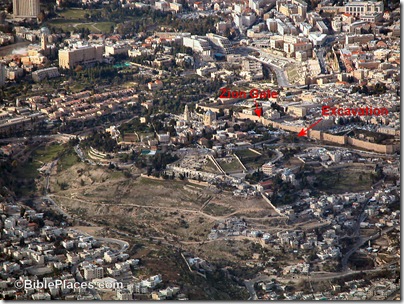Excavations were resumed in June on Mount Zion after a long hiatus (since 2000). The “Mount Zion Archaeological Expedition is directed by Shimon Gibson and James Tabor and looks very promising.
After only five days of fieldwork this summer, they report the discovery of:
- Well-preserved houses from the 1st century A.D.
- Clear abandonment of the area during the Late Roman period (c.70-330 A.D.)
- Preservation of the area during construction of the Nea Church (c. 530 A.D.)
You can read a 5-page report about the site and excavation (pdf, via Dr. Jim West). Two seasons are planned for 2008 and it sounds like they will accept students as volunteers. There are not many excavations in Jerusalem that are open to volunteers, so you might want to see what you can do to get in on this one. I can personally testify that working in an excavation with Shimon Gibson is interesting and rewarding.

12 thoughts on “Mount Zion – New Excavations”
Todd, did you ever get in to see what few ruins are left of the Nea church? I found the place last year, but I had to wait until a school that used the courtyard in front was out and then the access was locked.
Al – I’ve been in there, but not recently.
Todd, what is the significance of the Nea Church? And how is it related to the Holy Zion Church? I consulted McRay but its still unclear to me.
Shireen – the Nea Church was built by the emperor Justinian in about 530 A.D. at the southern end, eastern side, of the Cardo. Its remains are today buried underneath the Jewish Quarter and part of the building sticks out beneath the southern Old City wall. The Nea Church was the biggest. For more information, see Avigad, Discovering Jerusalem (1983).
It suprises me that a part of the church was that far south. I know too little work has been done on Byzantine Jerusalem, but in the model in David’s (sic) Tower, Nea doesn’t look to be close enough to the current walls.
http://webpages.charter.net/sandalow/Byzantine-Jerusalem-Model-D.jpg
http://webpages.charter.net/sandalow/Nea-Church-Gate-Entry_WEB.jpg
Al – the reason for this is that the southern walls of Jerusalem in the Byzantine period were much further south than the present walls of the Old City. In other words, on that model, the south Old City wall of today roughly lines up with the southern edge of the Nea Church.
hi todd,
on an unrelated matter, i was looking at some of your archived posts, particularly the road between Jericho and Jerusalem. You have a photo of one section. The road doesn’t look very wide – do you know/remember how wide it is?
Travis – I would guess that one piece where it is well (but not fully) preserved, it’s about 10 feet wide.
Perhaps the Byzantine model is simply wrong, since it looks like the walls would have then extended beyond the Hinnon valley. The distance from the Nea to the south wall is about half of what it is north to the Damascus gate.
That said, I’ve never been all the sure where the south-western walls of Herodian Jerusalem were set.
the Nea Church = the New Church Where was the old Church ?
And why is there no buildings on the temple mount in this Byzantine Jerusalem Model ?
http://webpages.charter.net/sandalow/Byzantine-Jerusalem-Model-D.jpg
Roma – I don’t think that you need an “old church” to have a new one. Lots of things today are dubbed “new” without the existence of a predecessor.
Most scholars believe that in the Byzantine period the Temple Mount was abandoned and empty. They think that this was the Byzantines’ way of showing the fulfillment of Christ’s prophecy that the Temple would be destroyed.
This is an interesting article about the Nea and the reasons for it's construction..
http://www.margaretbarker.com/Papers/TheNewchurch.pdf